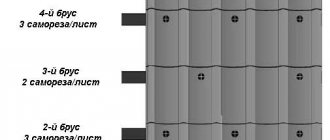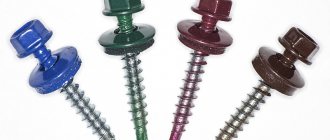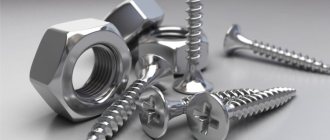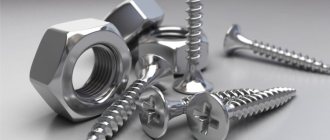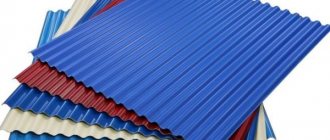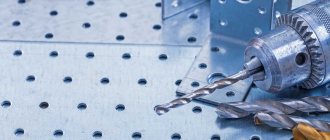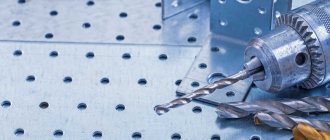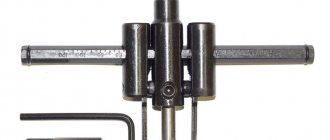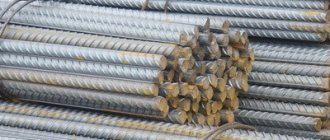Nuances of choice
You need to choose self-tapping screws very carefully, because the final result depends on the quality of the product and its parameters, and if we are talking about large-scale construction, then both safety and people’s lives. Although the universal self-tapping screw, according to experts, can be used to fasten any types of materials, when choosing, you still need to consider:
- condition of the main elements of the product;
- technical characteristics: head shape, thread pitch and sharpness, how sharp the tip is;
- whether the product was treated with a special compound after manufacturing;
- what material was the fastener made from?
Important factors are the cost and manufacturer of the fasteners. Experts and experienced installers say that it is advisable to give preference to well-known brands and inquire about the availability of quality certificates.
How to choose universal self-tapping screws, watch the video.
How to screw self-tapping screws into wood?
Self-tapping screws for wood
All modern high-quality fasteners are coated with a special lubricant, which melts during friction against the surface, which facilitates the immersion process. In order for screws for wood, stainless steel or other materials, to be screwed in easily and correctly. you need to do the following:
Mark a location on the selected surface using an awl or a small drill. Install the self-tapping screw there with the sharp end. Take a suitable tool and begin to carefully screw the product in the direction of the spiral. Continue until the screw fits tightly into the material. Correct location - the surface of the head is located at surface level.. https://www.youtube.com/embed/Fjz7Ttsu9Dk%0D
https://youtube.com/watch?v=Fjz7Ttsu9Dk%250D
Rules for working with furniture fittings
Having understood the main types and purposes of furniture fasteners, you should also study general recommendations for working with them:
- Tools for assembling furniture are selected taking into account the type of material. For soft (chipboard) rocks you need a wrench and a hex wrench. In hard (solid wood) fasteners can be screwed in with a screwdriver without fear of damaging the furniture panel.
- If the furniture is made independently, before installing the connecting fittings it is necessary to carry out drilling: you cannot immediately screw in a Euroscrew or other fasteners, the chipboard may delaminate and warp. Furniture that is manufactured at the factory already has drilling; it is performed by the manufacturer.
- To install the main types of fastening hardware, you will need special bits for a screwdriver. In addition, you may need wood glue, wood drills of different diameters, a jigsaw and pliers.
A variety of fastening fittings allows you to securely and discreetly fasten furniture parts at any angle. The main thing is to choose the right connecting elements and install them.
Did you manage to solve your problem using the recommendations from the article?
Yes!
45.45%
No. More answers required. I'll ask in the comments now.
38.29%
Partially. There are still questions. I'll write in the comments now.
16.25%
Voted: 363
How and what to fix self-tapping screws with
Which wood screws are better: what they are and how to choose suitable hardware
Among the variations of tools with which self-tapping screws work well, the first place, naturally, is occupied by a screwdriver.
Many types of screws can be screwed in using a regular Phillips screwdriver
In this case, it is better not to make unnecessary efforts, but to screw in evenly and carefully. Remember, oxidized screws are very fragile
Safety precautions when working with the tool
Let's consider a short set of rules for working with the tool:
Illustration Description of action
When working with a screwdriver, you should never put your hand under the tool. Even if you think you have control over the situation, leaning slightly can cause the tool to slip and cause injury.
Never try to drill a self-tapping screw into a knot. Such areas are often the densest. In addition, the mounting location cannot be called durable.
It is better to choose a place a little to the left or a little to the right.
Always keep the tool firmly in line with the screw you are turning, whether you are working at an angle or not. In relation to each other they must create a single line.
Fastening Features
What kind of self-tapping screws are needed for chipboard is a question, the answer to which can be found out from the consultants of the fastener store. Before turning to specialists, it would be useful to understand the topic yourself. The type of fastener depends on what is to be fastened and how, on the characteristics of the material and on the design of the future product. For example, you have to work with 16 mm thick chipboard sheets, and you don’t know which screws to use. Choose the most practical and reliable fasteners so that the connections are durable and can withstand operating loads.
When fastening chipboards, the sheets are connected in two ways - they make a through hole and screw fasteners into it, or make a hidden connection. Typically, the sheets being joined are at right angles to each other. It is also often necessary to nail a chipboard shelf to the wall. For such work, you need to choose dowels taking into account the characteristics of the material (brick, aerated concrete, foam blocks, wood) from which the wall is made.
What is it and its purpose
Inch thread: size table, markings, GOST
A furniture screw is a special fastener, the main purpose of which is to connect parts made of wood materials by screwing and creating threads inside the product. It is used in the assembly of furniture structures, carpentry and construction products, since such fastening has a positive effect on the quality of furniture, its service life, and aesthetics.
Used for such building materials that are used in the production of cabinet furniture, such as:
- solid wood sheets;
- chipboard;
- fibreboard;
- laminated chipboard;
- plywood;
- thin drywall.
Externally, a furniture screw is a rod made of metal and designed:
- a head of a certain shape, which is part of the fastener and also serves to transmit torque;
- slot - a recess of a certain shape at the end of the hardware head;
- massive, widely protruding thread above the main rod, the lower turns of which are conical and jagged;
- sharp tip.
Thanks to the large thread and rod surface, the stress on the parts to be twisted is minimized. As a result, the assembled structure becomes resistant to any impact. Also, the screws are in close contact with the material being fastened due to the same diameter of the smooth and core parts of the hardware.
In the production of furniture screws, high-quality high-strength carbon steel is used, which, due to its chemical composition and heat treatment, has the necessary set of mechanical characteristics. This allows you to easily remove hardware from the material if it is installed incorrectly. To increase the anti-corrosion properties, the screws are treated with a special composition based on nickel, zinc, and brass.
A furniture screw has advantages and disadvantages. Positive characteristics include:
- reliable and stable fixation;
- the easiest possible installation;
- ability to withstand high fracture loads;
- the ability to connect structural elements one after another;
- tightly tightening furniture parts;
- does not require special skills or complex auxiliary devices.
In addition to the advantages, it is necessary to identify the disadvantages of furniture screws:
- the need to disguise products using a plastic plug in the color of the material;
- Elements connected using hardware cannot be disassembled, since the structure will not withstand repeated assembly.
A furniture screw is responsible for fastening furniture body parts together, fastening shelves, and connecting sections. It determines the reliability of the connection, safety, and the ability to easily disassemble and reassemble furniture without damaging it when moving is necessary.
Fastener categories
If half a century ago the main elements for assembling furniture components were wooden dowels, and installation of various pieces on site was carried out using nails or screws, today the range of accessories for connecting individual parts and furniture elements has expanded significantly.
Modern fastening and connecting parts can be divided into several categories, including both highly specialized products and universal fittings:
- threaded furniture fasteners are a classic combination of two parts - a screw-nut, which are sometimes supplemented with washers to reduce specific loads;
- a confirmat (euroscrew) is a screw fastener whose threads are similar to screws or self-tapping screws, which can significantly speed up the assembly process;
- eccentric couplers are used to speed up adjustment and in cases where it is necessary to avoid the visibility of individual fastening elements;
- Traditional dowels and corners, which have long been used to connect individual panels of furniture, have also not lost their popularity.
Within each category there are many subspecies, each of which is intended for use for certain, sometimes quite specific purposes. Let's consider the most popular and widely used samples, which are used in the manufacture, assembly and installation of most furniture items.
The most common types of furniture fasteners
Let's consider the most common groups of connecting and fastening fittings for furniture, the features of their installation and operation.
Screws with a semicircular or decorative head and bolts with a fixing mustache or square head are the main types used for fastening individual panels of frame furniture. Thanks to the fixing mustache or square head, the bolt (screw) is fixed in the hole of the particle board, which prevents it from turning. Due to this design feature, the assembler has the ability to tighten the nut without additional fixation of the screw.
Universal screws with a countersunk or semi-countersunk head have slots of various shapes (cross, hexagon socket, straight slot and others) and are intended for fastening individual assembly parts inside furniture structures. They are used for:
- installation of facades, rear walls,
- fastening of drawer guides;
- installation of mounting angles;
- fastening of any furniture fittings, from roller supports to locks and drawer handles;
- manufacturing combined parts - for example, countertops from two sheets of MDF boards.
On a note!
When using universal screws, either screwdrivers with replaceable bits or sets of screwdrivers with replaceable tips are used.
Confirmats (Euroscrews) in modern furniture production are the most popular type of fastening and fixing devices. This type is used for fastening any parts made of chipboard or MDF panels.
Before screwing in the Euroscrews, holes are pre-drilled in the parts using a special confirmatory drill, the diameter of which depends on the diameter of the fixing element. To screw this type of fastener, either a screwdriver with special bits or screwdrivers with seed attachments are used. The type of bit or attachment depends on the type of slot.
Eccentrics are another fitting, bearing the somewhat exotic name of rasteks and minifixes, which allow you to connect and attract panels located at right angles to each other. Despite the obvious advantages of this category of fasteners, their main disadvantages are:
- the need for additional milling of furniture panels to install individual fasteners;
- relatively high cost.
- high precision of marking and difficulty in installing individual fasteners;
On a note!
To install individual minifix parts, you will need three different types of woodworking tools - one end mill and two drills of different diameters.
Furniture corners have proven themselves to be a reliable, easy-to-install element. Today they can be made either of metal or of special, high-strength plastic. In the industrial production of cabinet furniture, the color of the plastic corner is matched to the color of the furniture.
Modern furniture dowels are made of wood, plastic or metal. Their main advantages are the low cost and ease of connecting furniture parts together. To increase the reliability of the connection, there is a corrugation on the surface of the dowels.
Features of choice
In general, the design of such a fastening element is quite simple. A dowel is a plastic sleeve that has, at the end opposite the hole into which the self-tapping screw will be screwed, longitudinal slots that diverge as the self-tapping screw is screwed in. The petals formed in this way wedge the fasteners. For a more durable connection, the surface of the petals is covered with various kinds of spikes or stops.
Coming to a specialized store with the aim of purchasing dowels for certain installation work, a non-specialist is faced with the most serious problem of choice. There are many options for these fastening structural elements.
First of all, the variety of colors will catch your eye, then it turns out that the sizes (length and diameter) of the dowels are not the same. But upon detailed study, it turns out that they can also be different in shape (number of petals, different thorns, and much more).
The conclusion from this may be the following: before going to the store to purchase dowels, you should clearly determine what they are actually needed for. Then the conversation with the consultant will be more substantive.
Let's consider some selection criteria - by the way, this is what a consultant at a specialized hardware store will most likely be interested in:
you need to select a dowel for a self-tapping screw based on the tasks assigned to the fastening; It is equally important to consider the material in which the fasteners are supposed to be made; Sometimes some decorative restrictions may arise.
What is the diameter of the drill bit for the self-tapping screw?
What materials are commonly used at home? Items made of wood, metal, plywood, drywall - their installation is not complete without the use of self-tapping screws. Of course, without practice, you can bend the screws and break them, all due to lack of knowledge on how to work with these fasteners. Therefore, it is better to learn in advance how to screw in self-tapping screws.
Fastening elements are divided into many types. Most often there is a division into “for metal” and “for wood”. They differ from each other even in appearance. The difference lies in the thread ball, that is, the distance between the threads. The thread of self-tapping screws for wood has a larger distance between the turns of the thread (for metal there is a smaller distance).
If you confuse the screws and screw the screw into wood, for example, into a sheet of metal, the fastening will either bend or even break. A self-tapping screw for metal in wood will not hold at all, since the wood will not penetrate between the turns and actually does not hold.
As for self-tapping screws for metal, you can find 2 varieties - with a drill at the tip and without.
Drill diameter for wood screws
It is quite easy to identify a self-tapping screw for wood - it has a large distance between the turns (than a self-tapping screw for metal). Why is that? The reason is quite simple - wood is a less dense material than iron.
Such screws can be of different colors - black, white, gold. The color does not affect functionality, that is, this is not some kind of special marking, but simply different colors for selecting fasteners to match the color. Of course, if you have white furniture, then it is better to use a white screw.
It is impossible to determine by the colors what this self-tapping screw is for wood or metal, only by the distance of the thread.
Self-tapping screws can be of different lengths and you need to choose according to your tasks; there are the smallest ones - a little more than a centimeter long and there are long ones, more than 20 centimeters long.
Black screws are usually 3.5 and 4.2 millimeters in diameter. And yellow ones - from 2.5 to 5.5 millimeters.
Of course, there should be no problems with soft wood, but with oak or acacia there may be difficulties (plus do not forget that the wood can split). Therefore, in order not to spoil the entire structure, it is better to first drill a hole of a smaller diameter in the material. The cap needs to be sunk flush into the material (to do this, pre-drill a recess with the same diameter as the cap).
If the diameter of the self-tapping screw is small, pre-drilling is not necessary, but if the diameter is more than 4 millimeters, then you need to pre-drill with a drill 0.5 - 1 millimeter smaller than the self-tapping screw itself.
Diameter of drill for metal self-tapping screw
If the metal that needs to be drilled or screwed into metal is less than 0.5 millimeters thick, then there are no problems, you don’t even need to pre-drill it. But if the metal thickness is greater, for example 0.8 millimeters or 1 millimeter, then you must first drill a hole for installing a self-tapping screw. Typically, the thickness of the hole being drilled depends on the thickness of the material. If you guess the size of the drill, then you can tighten the self-tapping screw even with a regular screwdriver.
Below is a table of recommended drill diameters for a certain metal thickness.
The most common drill diameter is 3.4, the others are less common.
In the case of self-tapping screws (+ press washer) up to 1.5 mm of metal thickness, you don’t have to drill a hole, but above that you can’t do without it, since the drill itself made from a self-tapping screw can’t do the job, it’s almost useless.
Correspondence table between drill diameters for sharp self-tapping screws and metal thickness
The table data may change a lot due to:
- The quality of the material itself;
- Quality of self-tapping screws;
- Screwdriver power;
- What kind of reliability is needed for fastening?
So, in general, if you have thick, dense wood or a thick sheet of metal, you first need to drill it (smaller in diameter than the diameter of the screw) and then screw it in.
A self-tapping screw is a fastening element consisting of the following main parts: a rod complemented by a sharp thread, and a head on which there is a recess for a screw-in tool. Since these hardware are made from a durable metal alloy, they are versatile: they are used to attach elements made of metal, wood, drywall and concrete.
How to screw it in correctly
In order to correctly screw in and securely fasten the self-tapping screw into the chipboard, you need to follow the recommendations for working with the selected type of fastener.
Chemical anchor
The strength of fastening with chemical anchors is higher than in the case of metal hardware. At the same time, screwdrivers and screwdrivers are not needed for installation; it is enough to buy a magic composition with a dispenser or several capsules. How the installation occurs: the compound is poured into the prepared hole, after a while the anchor hardens.
Chemical anchors are not subject to corrosion, which is especially important for assembling furniture and other chipboard products for bathrooms and other rooms with high humidity. Disadvantage - this type of fastener tightly connects the parts. Further disassembly and assembly will require design changes to the product.
Wooden dowels
Chopiks, also known as furniture dowels, are inconvenient to use for fastening chipboard sheets. Wooden dowels are usually used to fix plywood and natural veneer panels. Without skill, it is almost impossible to assemble a wardrobe on choppiks: you need to use glue and clamps. Self-tapping screws under chipboard greatly simplify the work of a furniture maker and ensure reliable assembly in a short time.
Metal frame dowel
The frame expansion anchor was originally used to secure the frame inside the window opening. Over time, this type of fastener has become popular in other areas of construction work and in furniture production, including when working with chipboard. The anchor consists of a spacer sleeve with a cone-shaped nut on the base, and a self-tapping screw that is screwed inward.
Frame anchors differ in the material of manufacture (usually steel), the length of the stud (depending on the depth of the hole), and the quality of the sleeve. When purchasing fasteners, we recommend that you pay attention to all of the listed parameters.
High expansion metal dowel
This type of hardware was developed for use with porous materials. An ideal solution for screwing a chipboard shelf to a foam block wall. The shaped ribs of the metal dowel provide excellent fixation of the hardware. Installation is simple: first insert a dowel into a pre-prepared hole, then screw in a self-tapping screw.
Functions of self-tapping screws
Self-tapping screws are intended for reliable fastening of structural parts and products to each other. At the same time, their design makes the installation process simple and convenient.
The tip of a self-tapping screw, made in the form of a drill, allows you to penetrate the material without much effort and without damaging the products, without performing preliminary drilling. The presence of a continuous thread guarantees high-quality and reliable fixation. The head for the roofing screw is made in such a way as to ensure maximum ease of tightening with a screwdriver or wrench.
Another advantage is the presence of a washer with an elastic gasket, due to which, even when tightened tightly, there is no squeezing or damage to the products. The elastic gasket also makes the connection waterproof, and the structure is not only durable, but also reliably protected from corrosion.
The variety of types and sizes of roofing screws make them suitable for installing various types of roofing products. In particular, self-tapping screws for wood and metal differ significantly from each other both in the shape of the tip and in diameter, as well as in the features of the thread.
Different types of self-tapping screws are used to secure different roofing materials. For example, galvanized self-tapping screws are used to fasten rafters, and self-tapping screws with a press washer are used to install sheathing. Therefore, you must first decide on the type of product, and then calculate the required quantity for the work.
The required length of roofing screws for certain installation work is determined based on the thickness of the products being fastened and the required penetration depth of the screws.
Types of wood screws
These fasteners are divided according to several criteria. Depending on the material from which they are made:
- brass;
- stainless steel;
- carbon steel.
To ensure that the fasteners are resistant to corrosion, they are additionally treated with special compounds. There are several types of surface treatment for wood screw fasteners:
- Phosphated
- a carbon steel alloy treated with phosphates. Suitable for rooms with high levels of moisture. - Oxidized
– carbon steel with protection in the form of an oxide film. Can be used in ordinary rooms. - Galvanized
- the same base with a zinc coating. Can be used indoors or outdoors. - Galvanized yellow decorative wood screws
. Used to secure decorative gold-colored loops. - Without cover
. Screwed indoors.
According to their shape, wood screws are divided into:
- with press washer;
- with hex head;
- roofing screws;
- confirmations.
According to the type of carving, wood screws are divided into the following types:
- wide step;
- small step;
- double thread.
Choice depending on furniture material
Modern furniture is made not only from chipboard or MDF. Manufacturers offer models made of natural wood, plastic, glass, and metal. Depending on the characteristics of each material, different connecting elements are used:
- Tree. To fasten parts made from natural raw materials, mainly metal fasteners made of galvanized steel or special composite alloys are used. These can be furniture corners, brackets, groove holders, tongue-and-groove fixation.
- Plastic. It is a plastic and pliable material, so to work with it, the same fasteners are used as for chipboard: corners, confirmations, plastic dowels, screws with nuts.
- Glass. To avoid damaging the fragile surface, use special holders with a self-tapping screw that is screwed into the wall. If you need to find a lock for glass doors, it would be advisable to use furniture hinges.
- Metal. In racks made from this material, screw holders serve as fastenings. They are installed using a screwdriver or drill equipped with a special drill. In order not to spoil the appearance of the product, the outside of the screw head is covered with a plug.
To connect boxes there is a separate type of fasteners - dovetail. There are several trapezoidal grooves on the female part, and corresponding tenons on the male part. Design features make it possible to easily disassemble and reassemble furniture many times.
When installing furniture products yourself, it is necessary to take into account their dimensions, shape, materials and other nuances. Incorrectly selected fasteners can lead not only to property damage, but also to serious injury. In addition to rational choice, strict adherence to the rules for working with certain connecting parts is required.
Screw fasteners are suitable for fastening metal furniture parts
Dovetail mount
Considering the fragility of glass, a certain type of fastening should be selected for it.
Cost of roofing screws
Considering the technical characteristics and scope of application, it would be unfair not to dwell on the issue of the cost of this fastening material.
The main components that form the cost of certain commodity and material assets offered to consumers on the goods market are standard:
- Product quality;
- Manufacturer's name (brand);
- Product functionality;
- And, of course, consumer demand.
It is naive to believe that roofing screws are any different from these requirements. To the above we can only add the consumption of material required for production. That is, the larger the screw, the correspondingly higher its cost.
The table below shows comparative prices for the well-known brand of “Gunnebo” products with a washer and EPDM gasket in the Moscow region:
| Roofing self-tapping screw | profile | vendor code | Price pcs/rub. |
| GTF Gunnedo 48 x20 | metal | RAL 6005 | 3,5 |
| GTF Gunnedo 4.8x35 | metal | RAL 8017 | 3,9 |
| GTF Gunnedo 4.8x50 | metal | RAL 3003 | 5,1 |
| GTF Gunnedo 4.8x70 | metal | RAL 3003 | 6,3 |
| Harpoon HE 3 5.5x25 | metal | 111173155025 | 4,7 |
| Harpoon HE 4 5.5x25 | metal | 111174155025 | 6,2 |
| Harpoon HE 5 5.5x32 | metal | 111175155032 | 6,9 |
| Harpoon HE 5 5.5x38 | metal | 111175155038 | 7,1 |
| Harpoon HE 5 5.5x51 | metal | 111175155051 | 10,1 |
| Harpoon HE 5 5.5x60 | metal | 111175155060 | 10,8 |
| Harpoon HE 5 5.5x8o | metal | 111175155080 | 13,9 |
Usage
In order for self-tapping screws with a drill to hold firmly in the material and provide a strong fixation, you should follow some rules for their installation. If you are attaching metal profiles, then it is better to gradually screw in the screws rather than hammer them into the surface. Screw in the self-tapping screw at a certain pitch.
The thicker the metal, the greater the load on the structure. Parts for metal are produced with the sharpest possible tip, so there is no need to prepare the material or drill an additional hole separately. High-quality models will be able to fit tightly into the object without bending.
If you are installing the roof with self-tapping screws, then you can hit them a little with a hammer. This must be done carefully so that they do not bend.
You can learn about what kind of metal can be drilled with a simple self-tapping screw and drill from the video below.
Black screws
Among the hardware, a special type stands out - black self-tapping screws. The diameter of such hardware starts from 3.5 mm and then increases step by step. They are made of low-alloy or carbon steel and coated with a zinc or phosphate protective layer. It fits tightly to the base and retains its plasticity even when deformed. A distinctive feature of these fasteners is the ability to cut through a metal sheet 1.5 mm thick without preliminary preparation. If the sheet is thicker, then pre-created holes are required here too. The relationship between the thickness of the metal and the diameter of the required drill is as follows:
- With a thickness of 2 mm, the hole is made with a drill whose diameter is 2.9 mm.
- If the sheet thickness is 3 mm, then a drill with a diameter of 3 mm is preferred.
- With a thickness of 4 mm, a drill diameter of 3.1 mm is required.
These data are collected empirically, but they may vary slightly depending on the following parameters:
Characteristics of hardware. Good fasteners comply with the appropriate GOST and DIN
It is important to buy original products and not fakes of dubious quality. You can distinguish an original from a fake by various signs, for example, the phosphate coating on low-quality black hardware flows off the fasteners under the influence of moisture. Characteristics of metal sheet
If the surface of the metal sheet is not as high quality as you would like, you can try to screw in a self-tapping screw without preliminary preparation. This way the connection will be quite tight. The force with which the fastener is screwed into the metal. With the help of a good screwdriver you can pierce a metal sheet even 2 mm thick. It is important to ensure that the fasteners do not overheat during the drilling process, otherwise they will become dull. Required level of fastening reliability. To ensure the strongest possible connection, the diameter of the drill should be taken slightly smaller than indicated above. It will be more difficult to screw in hardware under such conditions, but fine threads will penetrate the metal better and the fastening will be reliable.
How to choose?
Of course, the most important thing is to decide on the purpose of using the screw: what and where the hardware will be used, whether it will be affected by natural conditions (rain, snow). In addition, it is worth checking the quality of the necessary screws.
- Hardware must be identical in color - this is direct evidence that they are processed equally well and will serve absolutely the same.
- There should also be no difference in size - visually everything is the same length and thickness. The same applies to the thread pitch: the turns are clear and with the same cutting interval.
- If there are special drills at the end, there should be no burrs there. The edge must be sharp and not broken, otherwise such a part automatically becomes unusable.
- The recess in the form of which the slot is made must be clear, deep and symmetrical.
- High-quality self-tapping screws, as a rule, are marked with a special marking on the packaging - this is a capital Latin letter. Fasteners with such markings are produced in large factories and undergo additional testing and are certified. By choosing high-quality products, you won’t have to worry that the fasteners will break off at the most inopportune time.
Recommendations
Naturally, over the years of using screws and dowels, various approaches have been developed that allow them to be used more productively. Here are some recommendations from experts.
- When choosing fasteners for certain purposes, first of all you need to choose a dowel, and only then - a self-tapping screw for it.
- Dense solid material allows the fastener to withstand greater loads than hollow or porous material, even with smaller consumable sizes.
- When selecting the length of the self-tapping screw, you should add to the length of the dowel the thickness of the material that is supposed to be fixed with it. For example, fastening a sheet of plywood 10 mm thick will require adding another 1 cm to the length of the dowel. So, with a sleeve length of 50 mm, the self-tapping screw should be 60 mm long.
- Having drilled a hole of the appropriate diameter, it is imperative to remove dust, splinters and fragments of material from it, otherwise it may be impossible to place a dowel in the hole. Inexperienced craftsmen try to insert a shorter dowel into such a hole. It is completely undesirable to do this - full consolidation may not occur. It is recommended to use a vacuum cleaner to clean the hole. The problem of preparing the hole for installation is especially pressing if you have to mount something to the floor. The hole in the wall can be cleaned using a screw or nail.
- If the fastener is made into a dense base (concrete, solid brick), then the thickness of the attached object can be 60% of the total length of the screw. If the fasteners are made into loose material, at least 2/3 of the self-tapping screw must be immersed in the wall in the dowel.
An overview of the various dowels in the video below.
Features of fastening heavy structures to foam blocks
When fixing sliding wardrobes against the wall, the question arises of which screws to use to attach the chipboard to the foam block masonry. If you use the wrong hardware, the cabinet wall may be ripped out of the wall. To prevent this from happening, attach the chipboard to the foam block using special self-tapping screws:
- High-expansion metal dowel. Before screwing in the hardware, pre-drill the chipboard sheet in the desired location and prepare a hole in the wall. The anchoring depth and dowel shape depend on the planned load.
- Metal frame dowel - suitable for screwing heavy chipboard structures, including shelves and racks. A metal sleeve ensures fixation of the hardware inside the hole. An anchor for aerated concrete has structural differences from fasteners for ordinary concrete - keep this in mind when purchasing.
Also, the previously mentioned chemical anchors are used to fix chipboard structures on foam block walls.
Nuances of choice
Before purchasing fasteners, you should know what criteria you should use to select them and what to pay attention to
- Dimensions of hardware (length, diameter and width of the head). The most popular fastener sizes when assembling furniture are 3x16 mm, 3.5x16 mm, 4x16 mm. To find out the dimensions of the products, you need to look at the markings. For example, the designation 3.5x45 mm PH2 will tell you that this hardware has a diameter of 3.5 mm, a length of 45 mm and a cross-shaped slot. The sizes of one batch must be the same.
- Color spectrum. Hardware from the same batch must have the same shade. Uniform color will indicate that all products have undergone the same processing under similar technological conditions. Their technical characteristics will be exactly the same.
- The slot holes should be deep, even and clear - it will be convenient to work with such hardware, since they will not “slip” from a screwdriver or power tool.
- Fasteners must have the same thread pitch - this will ensure uniform load distribution between the threads.
Before purchasing, you need to evaluate the quality of the hardware visually.
Broken parts will indicate poor quality of the product.
How to determine?
It is quite difficult to learn by heart all the standard sizes of self-tapping screws, and besides, there is no need for this. Furniture or other interior items are often sold with suitable fasteners, and to find out which screw to buy for a particular building material, just look at its thread.
Based on the type of thread, the following options are distinguished.
| Thread pitch | Purpose |
| Average | Universal. Suitable for metal, wood, asbestos, plastic, plaster and other materials. |
| Frequent (or even double entry) | Perfect for fastening metal profiles no thicker than 9 mm. They hold well without dowels, but require pre-drilling. |
| Rare | For highly soft materials: asbestos, gypsum, soft wood, plastic. Do not require dowels. |
| "Herringbone" | For brick and reinforced concrete. They require a dowel. |
| Notched | For brick and reinforced concrete. Do not require dowels. |
| Asymmetrical | For assembling furniture from chipboard, plywood, wood. Requires pre-drilling. |
In general, to select the correct size of self-tapping screw, you need to follow a few simple rules.
The length of the hardware must be such as to stitch the attached element right through and secure it to the base. Particular attention should be paid to the length of the screw when choosing fasteners for wooden structures. The fastening must pass through the parts and enter the workpiece no more than 1/3 of its thickness in cases where it is not secured with corners, and 1/4 if it is secured. The price of a self-tapping screw directly depends on its length, so using longer fasteners than necessary is irrational from the point of view of economy. The heavier the screw, the heavier the overall weight of the structure
This can be ignored during a single use, but in certain cases a builder can use up to several hundred thousand self-tapping screws on a structure, and in this case their total weight will be significant.
In order to select a dowel for a self-tapping screw, you can contact the store salesperson or use the following sign.
| Dowel | Self-tapping screw |
| 5 | 2,5-3 |
| 6 | 3,5-4 |
| 8 | 4,5-5 |
| 10 | 6 |
| 12 | 8 |
| 14 | 10 |
Features and Benefits
The confirmat is a screw with a countersunk head with two types of slots - for hex and tetrahedral tools.
Its rod has a blunt end and is equipped with a massive, widely protruding thread, the lower turns of which are conical with notches, designed for cutting threads in the material.
Under the head of the screw, the rod has a smooth, unthreaded area.
Euroscrews are made from high-quality carbon steel and equipped with nickel, zinc or brass coating.
The steel used for the production of Euroscrews is ductile, so they bend, but do not break if installed incorrectly, which makes them easy to remove from the material.
A single-element screed is designed for connecting parts made of wood and materials created on the basis of woodworking products - chipboard and MDF panels.
The size range of this fastener is presented in the following ratios of outer thread diameter and screw length (mm): 5x40, 5x50, 6.3x40, 6.3x50, 7x40, 7x50, 7x60, 7x70.
The most popular ones include confirmations with a length of 50 and 70 mm with a thread diameter of 7 mm.
Euroscrews with a regular head require additional countersinking of the hole to place the head flush, but they are also available with a small tooth under the head, which provides the hole with a chamfer of the desired size simply during installation.
If the confirmation is mounted on the front surface of the furniture body, then today a wide selection of decorative plugs and stickers are offered to mask the screw heads, which can be selected in accordance with the decor of the furniture material.
Nuances of fasteners
Despite the versatility of this fastening element and the ease of working with them, a certain skill is required, mainly associated with knowledge of the characteristics of a particular material to be installed.
Holes for confirmations can be made using drills with a diameter of 4.5-5 mm for the screw rod, and a hole for the head is made with a special stepped cutter attached to the drill.
The last option is the most convenient, as it allows you to prepare holes in one pass.
To make a quality hole, it is better to use a high-speed tool. At low speeds, the drill can pull the wood and become clogged with chips that will not be completely removed from the hole.
The cutter makes perfect holes; when removed, the drill leaves small chips along the edge of the holes, which in this case is not critical, since they will be covered by the screw head.
Euroscrews provide more reliable connections than other types of fasteners due to the wide protruding threads that firmly cut into the material.
Confirmations are installed using a screwdriver or drill with the appropriate bits or hand keys.
For beginners, it is better to install manually in order to control the process, and in case of excessive resistance of the screw during installation, remove the fastener in time, avoiding mechanical damage to the material.
Confirmat - furniture screw
Unlike a traditional sharp self-tapping screw, in this type of svfs the main feature is the blunt end. Furniture hardware has a countersunk head with a cross-shaped slot, as well as a rare threaded notch. Used for assembling furniture, fixing sheets of chipboard, MDF, plywood and other wooden planes, regardless of the weight of the element.
Roofing screws
Roofing tools are always characterized by a more complex design. Roofing screws are no exception. This is a combination of a screw and a traditional self-tapping screw: a round head with a slot for a screwdriver or a hexagonal recessed head and a sharp tip.
Length – up to 150 mm, diameter – up to 6.3 mm. Made from high carbon stainless steel. Used for fastening all types of roofing materials, regardless of weight and purpose.
Varieties
Furniture fasteners perform the same function, but under different conditions. Some are designed to create the frame of cabinet furniture and connect its parts. Others attach a specific part of the product to the wall or floor. They also differ from each other in material of manufacture, shape, and cost. Understanding the features of all types is not easy, but it can be done even without professional help.
Corners
A furniture corner is the simplest type of fastening, both in design and installation method. Its installation does not require special skills, so this type of fittings is suitable for those who have no experience in assembling furniture. To work with such elements, you need a minimum set of tools: a screwdriver, drill or screwdriver, self-tapping screws or special couplings. There are 2 types of corners, they are described in the table.
| Types of corners | Peculiarities | Where are they used? |
| Plastic | Lightweight, relatively small in size. Equipped with a special plug that improves the aesthetic properties of the product | Used to support parts of the structure, suitable for tying wooden panels |
| Metal | They are a symmetrical part, the angle between the sides is 90 degrees. Considered more reliable due to durable material | They are used in the assembly of wardrobes and kitchen units |
Among the disadvantages, it is worth highlighting the unpresentable appearance of metal furniture fasteners and the unreliability of the plastic alternative. Both corners become loose over time, causing the furniture structure to become unstable. From time to time, such fittings need to be tightened and, if necessary, completely replaced.
The purpose of furniture screed, its main types
Metal
Plastic
Confirmations
Euroscrew (another name is Euroscrew) is a simple, easy-to-install fastener that is suitable for fastening parts of any furniture. Such elements are fixed using a drill or screwdriver. The most popular confirmation size is 7 x 50 mm. The product provides a reliable connection that can withstand high loads. If necessary, an already installed screw can be easily corrected; a carpenter's hammer is used for this.
For successful installation, you need to make 2 holes in those furniture elements that need to be connected. There are separate drills for confirmations on sale, but professional furniture makers claim that they have no advantages over their conventional counterparts. At the end of the work, the screw heads are covered with plugs. When working with furniture made of chipboard, you need to take into account that the material is easily deformed.
Confirmat is more reliable than a furniture corner, but not as practical as an eccentric tie.
Screed
Unlike the first two options, this element is used primarily in factories. For its high-quality installation, holes are required that are accurate to a fraction of a millimeter. After installation, the screeds remain invisible, which is their main advantage. There are 2 types of such furniture fittings:
- Eccentric coupler. Connects elements at any angle, ensuring the durability of the assembled structure. The latter can be safely disassembled and reassembled several times, the quality of the product will not suffer from this.
- Intersectional. It is a screw and nut combination that is only suitable for perpendicular parts. This type is used in kitchen countertops and bed headboards.
The size of the most popular ties varies from 32 to 50 mm. The final choice depends on the thickness of the material. Using the wrong size will negatively affect the reliability of the connection.
Intersectional
Eccentric
Dowel
When a hidden fastening element is required, furniture makers choose dowels. Small wooden fasteners have a cylindrical shape. Standard dimensions: diameter - 8 mm, height - 35 mm. Dowels cannot be used at home without special equipment. For installation, prepare identical, coaxial holes in the two pieces of furniture being connected. The dowel is inserted into one part, and the other is placed on its protruding half. Additional treatment with PVA glue increases the reliability of fixation.
Types of height-adjustable furniture legs, installation rules
The fastening takes on the entire lateral load and is therefore considered durable. It is actively used in working with chipboard, MDF, plywood, and natural wood. It is used in different types of furniture: cabinets, chests of drawers, racks, beds.
In addition to the need for jewelry precision in work, dowel fastenings have another drawback: they cannot be dismantled and reinstalled without damaging the furniture.
Bolt nut
Furniture fasteners, consisting of a bolt and a nut, are one of the simplest. As an alternative, a screw is often used. Due to the semicircular cap, it remains motionless after installation. This option, just like a furniture corner, is suitable for inexperienced furniture assemblers, but professionals use it extremely rarely. The main advantage of the method is the possibility of repeated disassembly and assembly of the structure. The main disadvantage is the visibility of connections.
The bolt-nut fastening is only suitable for connecting parallel parts.
Shelf supports
Shelf holders differ from previous options in their ability to connect completely different materials, for example, chipboard and glass. Furniture factories produce many models of furniture with a similar combination. All types of these fasteners are divided into 2 main categories:
- For chipboard. In this case, the shelf holder consists of a self-tapping screw and a holder. The first is attached to the cabinet wall, the second serves to support the shelf. It is securely fixed thanks to the presence of threads on the fastener.
- For glass. Consists of a rod and a screw. The shelf is placed into the base after installing the screw in the cabinet wall. The result is not only neat, but also quite durable. The main disadvantage is the need to use an elastic pad.
Types of furniture casters, their design features
Any closet or cabinet requires shelf supports. These functional elements cannot be secured in any other way. Fastening parts are presented in a wide range, which allows you to choose an option that ideally matches the design of the furniture.
